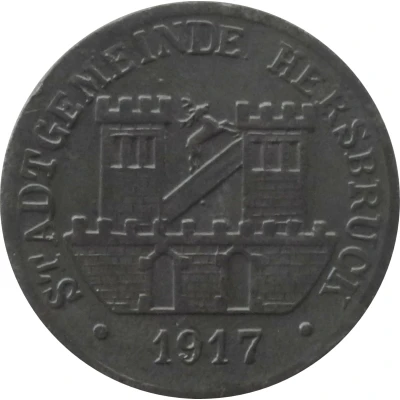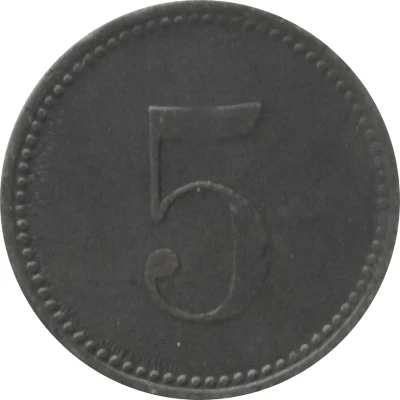


© Willem63 (CC BY-NC-SA)
5 Pfennigs - Hersbruck
1917 year| Zinc | 1.23 g | 18.0 mm |
| Issuer | City of Hersbruck (Federal state of Bavaria) |
|---|---|
| Emperor | William II (Wilhelm II) (1888-1918) |
| Type | Standard circulation coin |
| Year | 1917 |
| Value | 5 Pfennigs (5 Pfennige) (0.05) |
| Currency | Mark (1914-1924) |
| Composition | Zinc |
| Weight | 1.23 g |
| Diameter | 18.0 mm |
| Thickness | 0.86 mm |
| Shape | Round |
| Technique | Milled |
| Orientation | Medal alignment ↑↑ |
| Demonetized | Yes |
| Updated | 2024-10-04 |
| Numista | N#65402 |
|---|---|
| Rarity index | 73% |
Reverse
Beaded rim surrounding denomination centered
Script: Latin
Lettering: 5
Edge
Plain
Comment
Issuing body: [Stadt, Bayern].Interesting fact
The 5 Pfennigs - Hersbruck 1917 coin was minted during a time of economic turmoil in Germany, known as the "Inflationary Period" (1914-1923), when the value of the German mark dropped significantly due to excessive printing of money to finance World War I and other economic factors. As a result, many Germans turned to alternative forms of currency, such as local Notgeld (emergency money) and foreign currencies, which led to the eventual introduction of the Rentenmark in 1923, a new currency that helped stabilize the German economy.